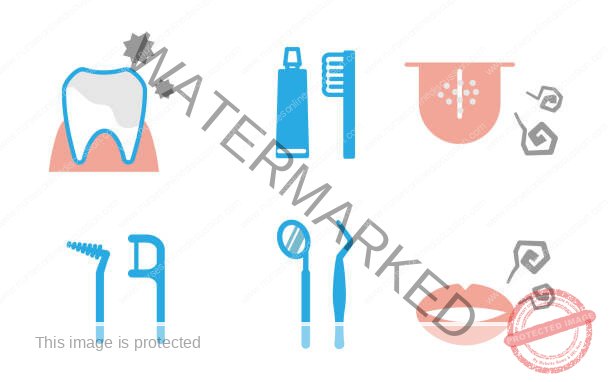Foundations of Nursing I
Subtopic:
Oral Care/Mouth Care

Importance in Nursing Practice
Oral care, or mouth care, is a vital nursing intervention that maintains oral hygiene, prevents complications, and enhances patient comfort and dignity. Poor oral health can lead to infections, pain, and systemic issues, particularly in vulnerable patients such as those who are unconscious, intubated, or immunocompromised.
By prioritizing oral care, nurses promote overall well-being, support nutritional intake, and foster patient confidence. These notes outline the purpose, techniques, principles, and nursing responsibilities for oral care, providing a practical guide for effective patient care.
Purpose of Oral Care
Oral care serves multiple clinical and therapeutic goals:
Hygiene: Removes plaque, food debris, and bacteria to prevent oral infections (e.g., gingivitis, thrush).
Comfort: Alleviates dryness, soreness, or bad breath, improving patient well-being.
Prevention: Reduces the risk of complications like aspiration pneumonia in ventilated patients or mucositis in chemotherapy recipients.
Assessment: Enables nurses to inspect the oral cavity for abnormalities (e.g., ulcers, bleeding gums).
Dignity: Enhances self-esteem by maintaining a clean and presentable appearance.
Principles of Oral Care
Effective oral care adheres to key principles to ensure safety and efficacy:
Patient-Centered Care: Respect patient preferences and comfort levels, explaining the procedure to reduce anxiety.
Infection Control: Use clean or sterile supplies and practice hand hygiene to prevent cross-contamination.
Safety: Position patients appropriately (e.g., semi-Fowler’s for conscious patients) to prevent aspiration.
Frequency: Provide care at least twice daily, or more often for patients with dry mouth, oral lesions, or intubation.
Individualization: Tailor techniques to patient needs (e.g., soft brushes for sensitive gums, non-foaming toothpaste for dysphagia).
Techniques for Oral Care
Oral Care for Conscious Patients
Preparation:
Gather supplies: soft-bristled toothbrush, non-abrasive toothpaste, cup of water, emesis basin, towel, gloves, and lip balm.
Perform hand hygiene, explain the procedure, and ensure privacy.
Position the patient upright (e.g., sitting or semi-Fowler’s) with a towel over the chest.
Procedure:
Assist the patient to brush their teeth using small, circular motions, covering all surfaces (inner, outer, chewing).
Encourage rinsing with water and spitting into the emesis basin.
Floss gently if appropriate, or use an interdental brush for patients with limited dexterity.
Inspect the oral cavity for redness, ulcers, or debris; clean the tongue with a brush or scraper if needed.
Apply lip balm to prevent dryness and cracking.
Post-Care: Offer a mirror for patient satisfaction, dispose of soiled supplies, and document findings.
Oral Care for Unconscious or Dependent Patients
Preparation:
Gather supplies: foam swabs, non-alcohol mouthwash (e.g., chlorhexidine), sterile water, suction equipment, gloves, and a towel.
Position the patient on their side with the head turned to prevent aspiration; place a towel under the chin.
Suction equipment should be ready for excess secretions.
Procedure:
Use a foam swab dipped in sterile water or mouthwash to clean the teeth, gums, and tongue, using gentle strokes.
Suction secretions as needed to maintain a clear airway.
Inspect for oral lesions, dryness, or crusting; repeat cleaning if debris remains.
Apply a water-based moisturizer to lips and oral mucosa to prevent cracking.
Post-Care: Reposition the patient comfortably, ensure suction equipment is clear, and document observations.
Nursing Responsibilities
Nurses integrate oral care into holistic practice through:
Assessment: Check for oral abnormalities (e.g., candidiasis, bleeding), dry mouth, or pain; assess patient ability to self-care.
Documentation: Record the procedure, frequency, and findings (e.g., “Oral care provided, no lesions noted”).
Patient Education: Teach patients or caregivers proper oral hygiene techniques for home care.
Infection Control: Sterilize reusable tools (e.g., suction tips) and use disposable swabs for high-risk patients.
Advocacy: Ensure access to supplies and report barriers (e.g., lack of toothbrushes) to management.
Related Topics
• General Principles and Rules of All Nursing Procedures
• Hospital Economy
• Use of Personal Protective Equipment
• Routine and Weekly Cleaning of the Ward
• Waste Management and Disposal
• Isolation of Infectious Patients
• Causes of Infection
• Medical Waste Disposal and Management
• Cleaning Methods
• Carry out Adequate Feeding of Patients
• Perform Bladder and Bowel Care
• Passing a Flatus Tube
• Administration of Enema
• Ward Report
• Lifting/Positioning a Patient
• Tepid Sponging
• General Principles in Patient Care
• Ethics in Nursing Care
• Principles of Infection Prevention and Control
• Body Mechanics
• Bed Making
• Vital Observations
• Bed Bath
• Oral Care/Mouth Care
• Care and Treatment of Pressure Ulcers
Get in Touch
(+256) 790 036 252
(+256) 748 324 644
Info@nursesonlinediscussion.com
Kampala ,Uganda
© 2025 Nurses online discussion. All Rights Reserved Design & Developed by Opensigma.co

